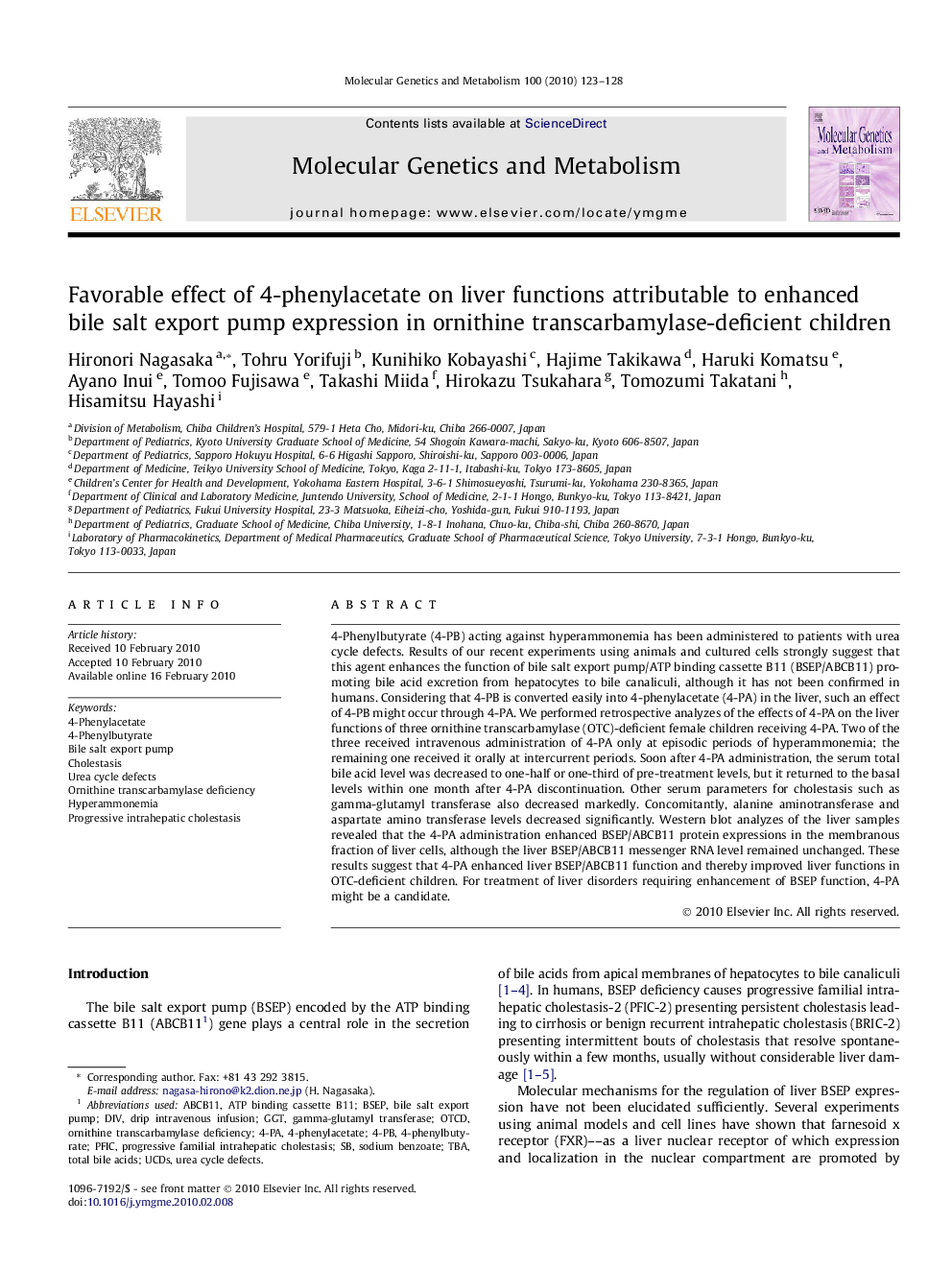| Article ID | Journal | Published Year | Pages | File Type |
|---|---|---|---|---|
| 1998541 | Molecular Genetics and Metabolism | 2010 | 6 Pages |
4-Phenylbutyrate (4-PB) acting against hyperammonemia has been administered to patients with urea cycle defects. Results of our recent experiments using animals and cultured cells strongly suggest that this agent enhances the function of bile salt export pump/ATP binding cassette B11 (BSEP/ABCB11) promoting bile acid excretion from hepatocytes to bile canaliculi, although it has not been confirmed in humans. Considering that 4-PB is converted easily into 4-phenylacetate (4-PA) in the liver, such an effect of 4-PB might occur through 4-PA. We performed retrospective analyzes of the effects of 4-PA on the liver functions of three ornithine transcarbamylase (OTC)-deficient female children receiving 4-PA. Two of the three received intravenous administration of 4-PA only at episodic periods of hyperammonemia; the remaining one received it orally at intercurrent periods. Soon after 4-PA administration, the serum total bile acid level was decreased to one-half or one-third of pre-treatment levels, but it returned to the basal levels within one month after 4-PA discontinuation. Other serum parameters for cholestasis such as gamma-glutamyl transferase also decreased markedly. Concomitantly, alanine aminotransferase and aspartate amino transferase levels decreased significantly. Western blot analyzes of the liver samples revealed that the 4-PA administration enhanced BSEP/ABCB11 protein expressions in the membranous fraction of liver cells, although the liver BSEP/ABCB11 messenger RNA level remained unchanged. These results suggest that 4-PA enhanced liver BSEP/ABCB11 function and thereby improved liver functions in OTC-deficient children. For treatment of liver disorders requiring enhancement of BSEP function, 4-PA might be a candidate.
